Ahoy There, Mateys!
That's the extent of my sea jargon knowledge... Sorry in advance! But anyway, today, I'm talking about one of the most iconic ships in American naval history: the USS Iowa. I dug these pictures up from a few years back, around the time that they first permanently parked the ship right here in San Pedro, California just down the street from my house.
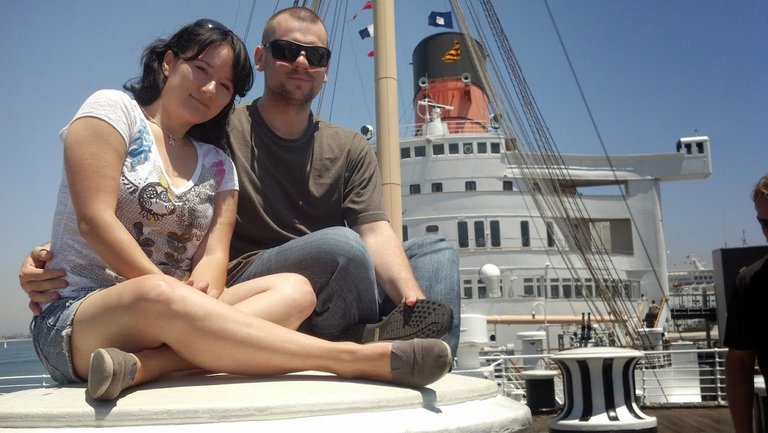
I'm no naval expert by any stretch, but there's something undeniably fascinating about this battleship. So, let's take a little journey back in time and dive into the world of the USS Iowa.
The USS Iowa (BB-61) is one of the four famous Iowa-class battleships, with its sisters being the USS New Jersey, USS Missouri, and USS Wisconsin. It was commissioned way back in 1943 during World War II. It was the lead ship of its class and quickly earned a reputation as....scary as hell if you are the enemy.
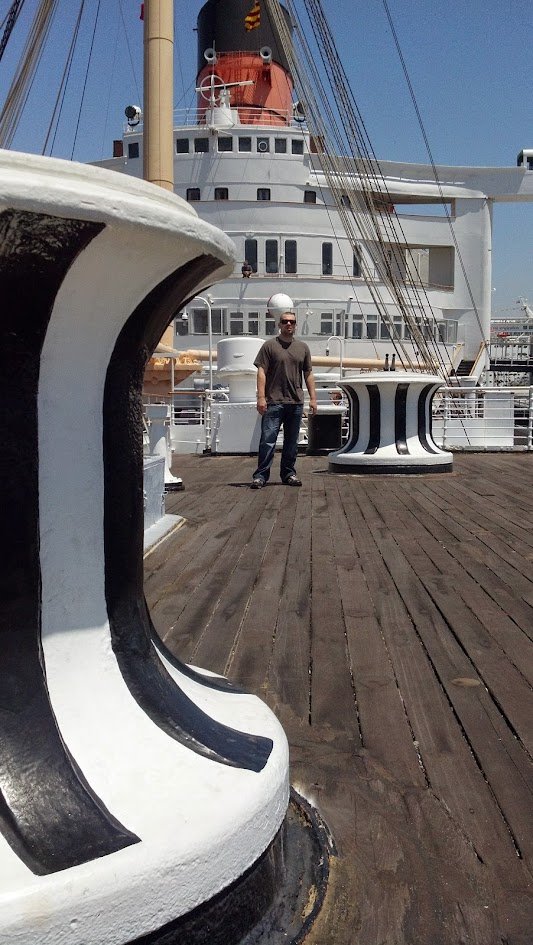
One of the coolest things about the Iowa is its ludicrous size. This ship was a true king of the seas. It stretches a long 887 feet and 3 inches in length. (don't forget those 3 inches, guys)
Able to move at a maximum speed of around 33 knots, it could certainly hold its own.
That's Some Serious Firepower Y'All!
But what's a battleship without some badass weaponry? The Iowa was armed to the teeth with nine 16-inch/50 caliber guns. Each of these guns could send a 2,700-pound shell over 20 freaking miles with pinpoint accuracy. 20 MILES!! If that doesn't send shivers down your spine, I don't know what will. These guns packed a punch, and they made the Iowa a force to be reckoned with.
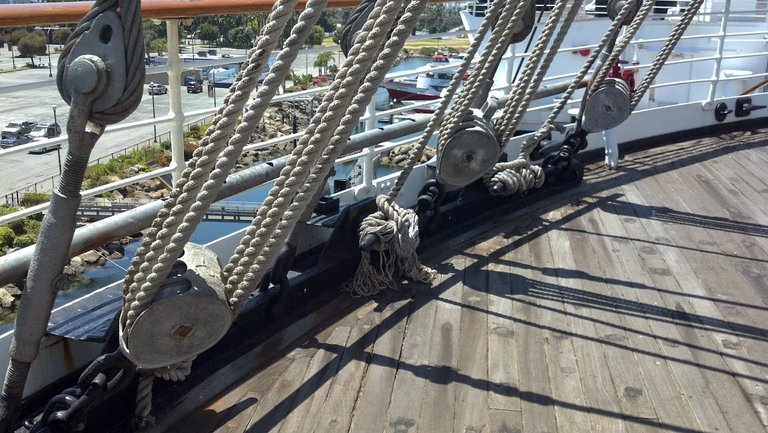
During World War II, the USS Iowa served seemingly everywhere. She had some pretty famous passengers too! One of them was none other than President Franklin D. Roosevelt himself, who used the ship as his mode of transportation during the Tehran Conference in 1943 (As you do).
FDR's wheelchair was even equipped with special fittings to ensure he could move around the ship comfortably.
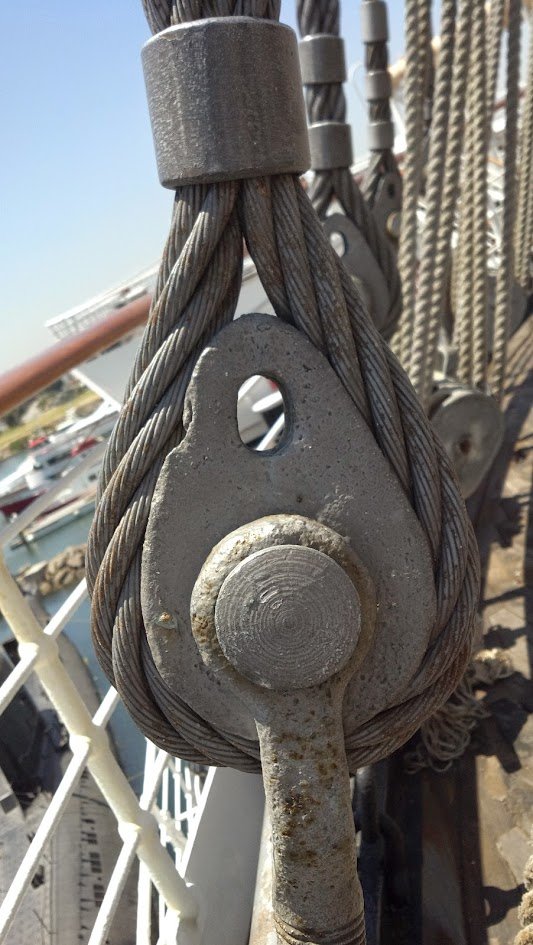
After the war ended, the Iowa was decommissioned and reactivated several times, and served in various conflicts and operations such as the Korean and Gulf Wars. She was even designated as a floating museum way back then for a while. But perhaps one of the most iconic moments in the Iowa's history came in 1989 when an explosion in one of her turrets tragically claimed the lives of 47 crew members. The incident brought attention risks associated with handling so much power.
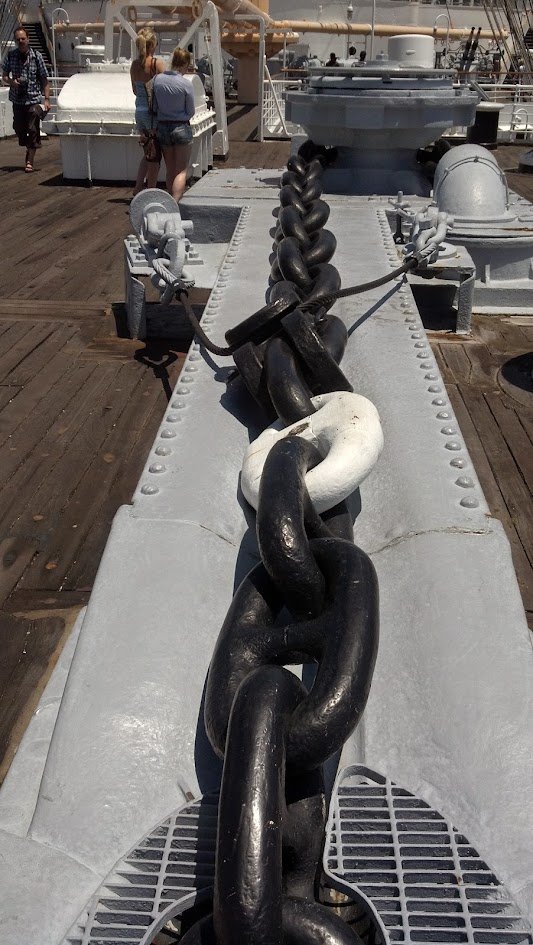
A Fascinating Museum
Today, the USS Iowa is a floating museum in the Port of Los Angeles. You can visit anytime to get a taste of what life was like on a battleship (Not for me!!). You can stroll the decks, check out the massive barrels of its guns, and even get a look at the living quarters, complete with a state-of-the-art (for its time) bathtub. I am fairly certain that I'd be spending most of my time puking up if forced to be out at sea on this monster, but I'm fine with it sitting still!

The USS Iowa represents an important chapter in American naval history. She's a symbol of the strength, resilience, and innovation that defined the United States during the 20th century. Visiting it today is not just a trip back in time; it's a chance to pay tribute to the men and women who served on her and to understand the power and impact of naval warfare.
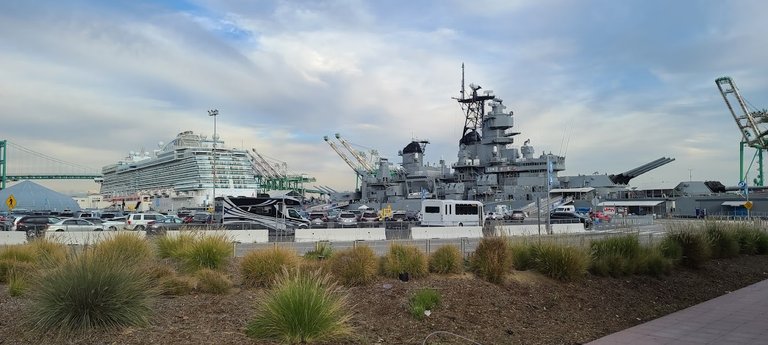
The battleship is parked right next to where the cruise ships come in daily, as you can see in the above photo. For as huge as the ship is, it looks absolutely dwarfed when a cruise ship moves behind it. In fact, I've been on the top deck of one of those NCL ships as it passed by the Iowa.
I would really appreciate your support!

